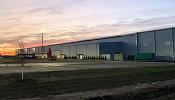President
- FMA
- The Fabricator
- FABTECH
- Canadian Metalworking
Categories
- Additive Manufacturing
- Aluminum Welding
- Arc Welding
- Assembly and Joining
- Automation and Robotics
- Bending and Forming
- Consumables
- Cutting and Weld Prep
- Electric Vehicles
- En Español
- Finishing
- Hydroforming
- Laser Cutting
- Laser Welding
- Machining
- Manufacturing Software
- Materials Handling
- Metals/Materials
- Oxyfuel Cutting
- Plasma Cutting
- Power Tools
- Punching and Other Holemaking
- Roll Forming
- Safety
- Sawing
- Shearing
- Shop Management
- Testing and Measuring
- Tube and Pipe Fabrication
- Tube and Pipe Production
- Waterjet Cutting
Industry Directory
Webcasts
Podcasts
FAB 40
Advertise
Subscribe
Account Login
Search
When adopting best practices isn’t your best practice
Metal fabricating and forming companies are best served to develop their own approaches to manufacturing success
- By Bill Frahm
- July 16, 2018
- Article
- Bending and Forming

if a company wants to improve, it's better served creating its own best practices rather than trying to replicate the success of other organizations.
If you have a goal to improve your results by adopting the industry’s best practices, you are pretty much assured of attaining average results at best. Because when your goal is to follow someone else, you’re always following.
The sheet metal forming industry continues to see growth in new materials and technologies. It’s important for you to identify your own best practices to best improve your mix of product and forming capabilities.
If you need to improve some measure of your company’s performance, your best way to do so is to identify practices that best serve your company’s needs. Learning from others is a valuable exercise, but if you try to blindly implement another company’s practices without regard to your own company culture, resources, strengths, and weaknesses, you’re forcing a costly process on your people without encouraging ownership.
What Are Industry Best Practices?
Industry best practices often are loosely associated sets of methodologies, rules, and theories that someone had success implementing. These practices attract consultants and evangelists who pronounce their virtues to all who will listen. Too often, glowing reports of success look attractive to company management who wish to see the same success.
Industry best practices become an issue when you are encouraged to implement them as they are. These practices can offer value in improving your efficiency and product quality, but they must be approached with healthy skepticism. “Just follow the rules” is the wrong approach to adopting another company’s practices. If your company is to grow and advance, you must challenge convention and incorporate your own experience and culture into the process.
Keep in mind that accepted best practices usually don’t reflect the range of complexity on the plant floor. Your practices should never compromise employee safety. Safety procedures often must be added to new methods. New practices should not jeopardize your strengths nor inhibit employees’ ability to research and discover new ways of building product. Exploration is the foundation of company growth and competitiveness.
Best Practices Gone Bad
Do you remember the 1990s? We listened to grunge bands, watched “Seinfeld” and “Friends” on TV, and heard endless alarmists predict the end of civilization on Jan. 1, 2000, unless you paid them to prevent the digital apocalypse. You also couldn’t pass a manufacturing firm without noticing the ubiquitous “ISO 9001 Certified” banner hanging from the building.
While process standards are great at creating awareness of good practice and setting guidelines, they are not best practices. Unfortunately, standards often do a much better job of generating business for consultants and compliance auditors than improving quality results. While standards can improve efficiencies and profitability, they also have a downside. As Frank C. Barnes (1998) said, “Many experts believe that ISO 9000 has become a pursuit of quality certificates rather than a pursuit of quality.” Remember that Bridgestone and Firestone were both ISO and QS 9000 certified when their tire treads separated on the road, resulting in rollovers of Ford Explorers.
Building Your Own Best Practices
Experienced metal forming professionals are aware of the need for good practices and many of their components. Their awareness is based on years of forming practice, decades of research, and intuition. When intuition fails, we tend to rely on rules of thumb and unproven theories. This approach leads to inconsistent application as each person relies on context and personal perspective. Consistent results require consistent practice application and practices based on research and knowledge rather than intuition.
If you manage your project in phases, you should get a good idea of what issues you must address and how best to address them. Developing your own best practices includes the following:
- Introspection. Your first activity must be to identify where you are now and where you want to go. This includes defining your strengths and limitations, documenting your current practices, and defining changes you want to make in the future. Maybe you are a high-quality supplier of conventional steel components who wants to expand your product offerings to include advanced, high-strength steel, dual-phase steel, or even aluminum. The technologies and practices for your new materials will be significantly different from those you use for mild steel. Your best practices should include flexibility to accommodate growth.
- Research and Theory. Effective practices must be based on the science of materials and the capabilities and limitations of technology to design and manufacture quality components efficiently. This phase will most likely require research and education for your staff and management.
- Experience. An effective practice incorporates employee experience and understanding of practices that work and those that don’t. Experience helps newer employees avoid painful trial and error. It also helps experienced employees to contribute their knowledge and take ownership of your new practices.
- Reflection. Any practice must include review and adjustment for continuous improvement.
Finding your best practices is a continuing effort to change and grow. Best practices are not a static project with a defined end. Finding your best practices also doesn’t need to be a large, all-encompassing project to change everything. Your self-review should weed out your greatest weaknesses and vulnerabilities. You can begin repairing your weakest practices first.
Finding your best practices can be arduous and painful. Not doing so, however, can cause greater pain, frustration, and tediousness.
About the Author

Bill Frahm
P.O. Box 71191
Rochester Hills, MI 48307
248-506-5873
subscribe now

The Fabricator is North America's leading magazine for the metal forming and fabricating industry. The magazine delivers the news, technical articles, and case histories that enable fabricators to do their jobs more efficiently. The Fabricator has served the industry since 1970.
start your free subscription- Stay connected from anywhere

Easily access valuable industry resources now with full access to the digital edition of The Fabricator.

Easily access valuable industry resources now with full access to the digital edition of The Welder.

Easily access valuable industry resources now with full access to the digital edition of The Tube and Pipe Journal.
- Podcasting
- Podcast:
- The Fabricator Podcast
- Published:
- 05/07/2024
- Running Time:
- 67:38
Patrick Brunken, VP of Addison Machine Engineering, joins The Fabricator Podcast to talk about the tube and pipe...
- Trending Articles
White House considers China tariff increases on materials

A deep dive into a bleeding-edge automation strategy in metal fabrication

A visit to Automate 2024 reveals the future might be now

Majestic Steel Arkansas fully operational

Rivian to expand Illinois facility to manufacture midsized SUV

- Industry Events
Laser Welding Certificate Course
- May 7 - August 6, 2024
- Farmington Hills, IL
World-Class Roll Forming Workshop
- June 5 - 6, 2024
- Louisville, KY
Advanced Laser Application Workshop
- June 25 - 27, 2024
- Novi, MI
Precision Press Brake Certificate Course
- July 31 - August 1, 2024
- Elgin,


























